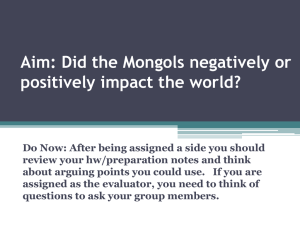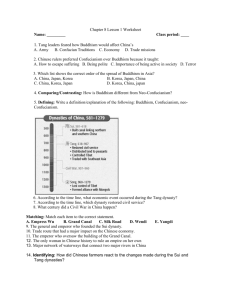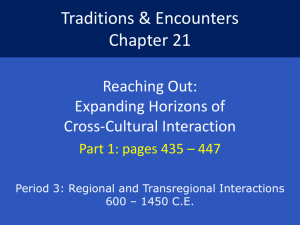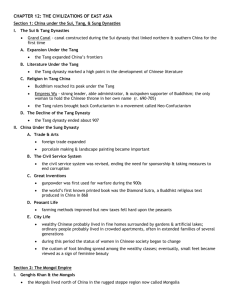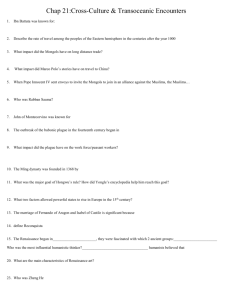Korea, Japan, and Vietnam Korea: Ruled by tang in 3rd century
advertisement
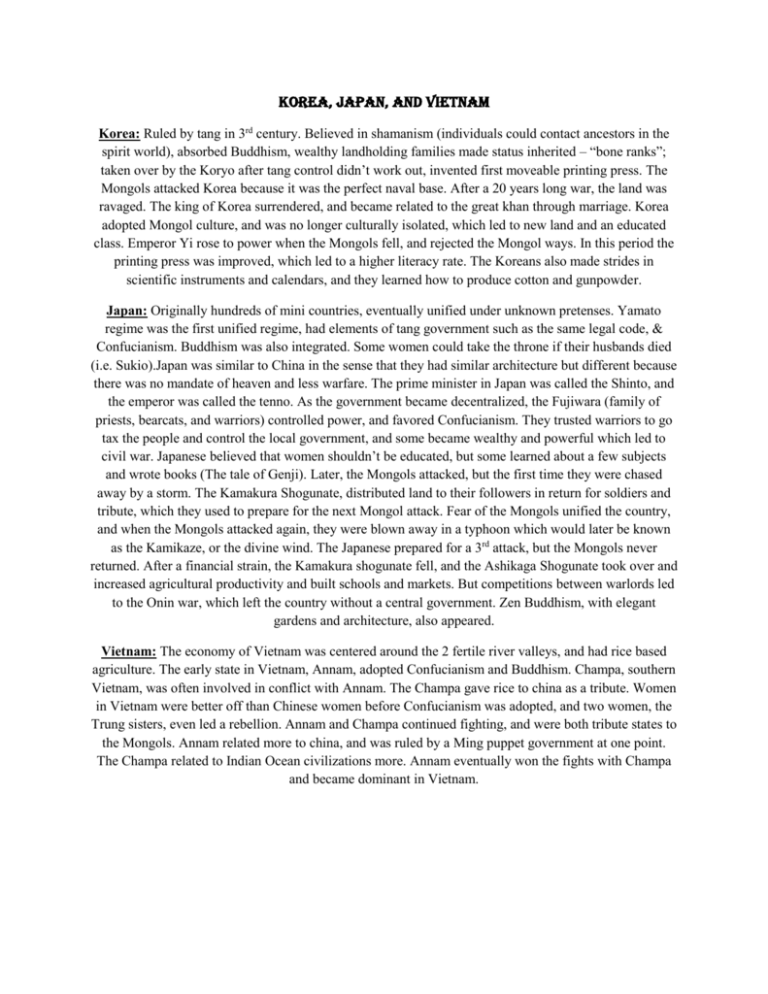
Korea, Japan, and Vietnam Korea: Ruled by tang in 3rd century. Believed in shamanism (individuals could contact ancestors in the spirit world), absorbed Buddhism, wealthy landholding families made status inherited – “bone ranks”; taken over by the Koryo after tang control didn’t work out, invented first moveable printing press. The Mongols attacked Korea because it was the perfect naval base. After a 20 years long war, the land was ravaged. The king of Korea surrendered, and became related to the great khan through marriage. Korea adopted Mongol culture, and was no longer culturally isolated, which led to new land and an educated class. Emperor Yi rose to power when the Mongols fell, and rejected the Mongol ways. In this period the printing press was improved, which led to a higher literacy rate. The Koreans also made strides in scientific instruments and calendars, and they learned how to produce cotton and gunpowder. Japan: Originally hundreds of mini countries, eventually unified under unknown pretenses. Yamato regime was the first unified regime, had elements of tang government such as the same legal code, & Confucianism. Buddhism was also integrated. Some women could take the throne if their husbands died (i.e. Sukio).Japan was similar to China in the sense that they had similar architecture but different because there was no mandate of heaven and less warfare. The prime minister in Japan was called the Shinto, and the emperor was called the tenno. As the government became decentralized, the Fujiwara (family of priests, bearcats, and warriors) controlled power, and favored Confucianism. They trusted warriors to go tax the people and control the local government, and some became wealthy and powerful which led to civil war. Japanese believed that women shouldn’t be educated, but some learned about a few subjects and wrote books (The tale of Genji). Later, the Mongols attacked, but the first time they were chased away by a storm. The Kamakura Shogunate, distributed land to their followers in return for soldiers and tribute, which they used to prepare for the next Mongol attack. Fear of the Mongols unified the country, and when the Mongols attacked again, they were blown away in a typhoon which would later be known as the Kamikaze, or the divine wind. The Japanese prepared for a 3rd attack, but the Mongols never returned. After a financial strain, the Kamakura shogunate fell, and the Ashikaga Shogunate took over and increased agricultural productivity and built schools and markets. But competitions between warlords led to the Onin war, which left the country without a central government. Zen Buddhism, with elegant gardens and architecture, also appeared. Vietnam: The economy of Vietnam was centered around the 2 fertile river valleys, and had rice based agriculture. The early state in Vietnam, Annam, adopted Confucianism and Buddhism. Champa, southern Vietnam, was often involved in conflict with Annam. The Champa gave rice to china as a tribute. Women in Vietnam were better off than Chinese women before Confucianism was adopted, and two women, the Trung sisters, even led a rebellion. Annam and Champa continued fighting, and were both tribute states to the Mongols. Annam related more to china, and was ruled by a Ming puppet government at one point. The Champa related to Indian Ocean civilizations more. Annam eventually won the fights with Champa and became dominant in Vietnam.

